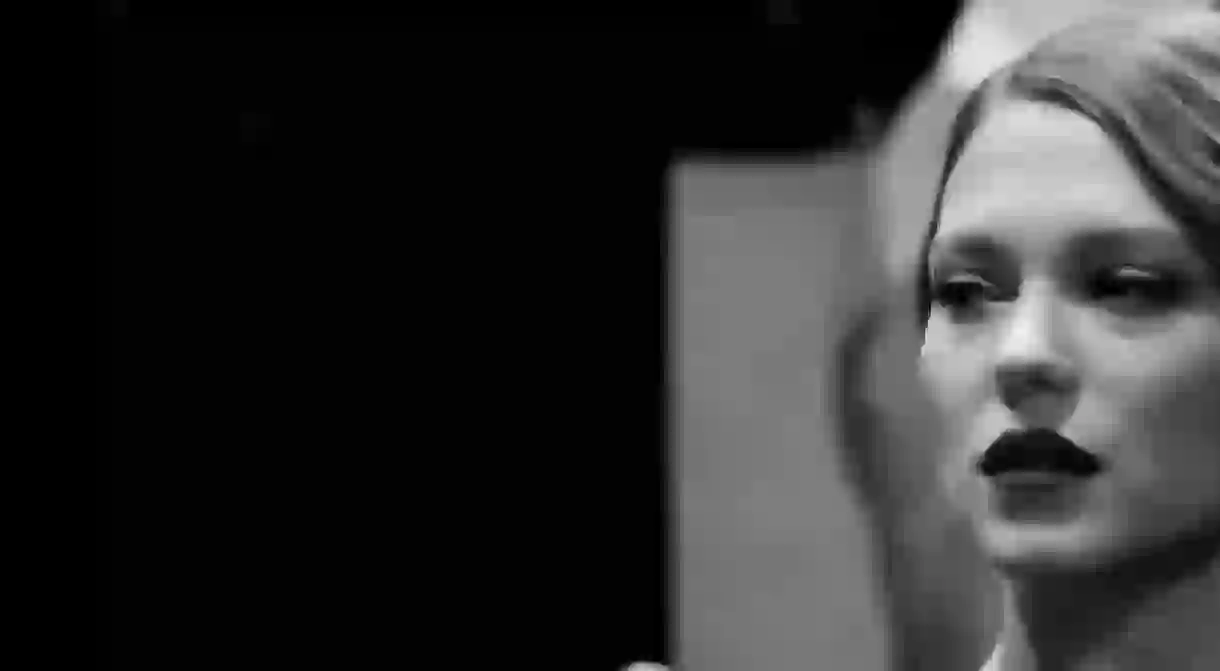Léa Seydoux, Cinema's New Queen Of Camouflage

Parisian actress Léa Seydoux has a certain je ne sais quoi. She eludes easy categorization, being hardly recognizable from one character to the next. Whether in a delicate cameos or a starring role, Seydoux consistently exploits her ability to camouflage her own personality. Here are six films that prove it.
Inglorious Basterds (2009)
‘I prefer to be a small part in a great film.’
Seydoux’s CV consists mostly of bit parts, and this may be the smallest. Appearing for a mere eight seconds, she’s but a blip amidst a kaleidoscope of characters, where the camera passes over a farmer’s three daughters. A minor role is no lost cause to Seydoux, however, who explains, “It’s like the film is a puzzle and I will be one of the pieces.” Being cast in the harrowing opening scene by Quentin Tarantino was a formidable prelude to her ever-deepening pathway into American cinema.
Midnight in Paris (2011)
‘Sometimes I feel the world is very sad. I feel like all art is fighting against death.’
Woody Allen cemented the actress as an intercontinental darling with her second role in an American film. An American film set in Paris, that is. The film is an idyllic marriage between the two cultures, of which Seydoux states, “I’ve always felt that Americans are very in the moment. There’s not so much melancholia and mystery, as there is in France.”
And she plays the part of the archetypical Frenchwoman with finesse, demure and mysterious as a bohemian art seller. Allen bestowed glowing remarks on the actress: “She is an enormously gifted girl, enormously beautiful,” and Seydoux in turn admits working with him to be her favorite experience with a director. Such is the nature of Woody Allen to recycle his muses that it can only be expected the two will collaborate on future projects.
Sister (2012)
“I like to play poor people because they’re more — I’m obsessed with this word —poetic.”
There was nothing poetic, however, about her character Louise in this French drama set in the Swiss Alps. After starring in The Belle Personne, Belle Epine, and La Belle et la Bête, Seydoux diverged from the superficial and showcases her range as arguably the least likable character of her film career.
If you find it difficult to empathize with Louise, the neglectful older sister to a young boy, you are not alone. Seydoux had misgivings about playing such an upsetting character, whose behavior oscillates between disregard and greed. Upon realizing it is the sister who is the child in their relationship, both of whom are without parental figures or a reliable source of income, her actions become more understandable. Seydoux imbues a complexity which unfolds throughout the film and even defends the young woman she portrays. “When I interpret characters, I want to save them in a way.”
Blue is the Warmest Color (2013)
“I don’t really think it’s a film about homosexuality—it’s more than that. Homosexuality is not taboo anymore.”
In the film that won her a top prize at the 2013 Cannes Film Festival, Seydoux played a bourgeois student who gets into a relationship with a teenage girl from a working- class family. The film was largely improvised, and though it is notorious for sex scenes that span a whopping 12 minutes, Seydoux demonstrates a devastatingly realistic portrayal of first love, and the pain that comes with its end. She elaborates that, though it is a story of love, it is also one of palpable social and class tensions. “It’s why they don’t communicate,” says Seydoux. “What creates the distance is something unconscious: your social background.”
Seydoux also admits to “horrible” working conditions, and reminisces over her first scene: “Even crossing the street was difficult.” Director Abdellatif Kechiche adhered to a tyrannical method of hundreds of takes for every scene. “By the end of it, I remember I was dizzy and couldn’t even sit. Kechiche burst into a rage because after 100 takes I walked by Adele and laughed a little bit, because we had been walking by each other doing this stare-down scene all day.”
The film is, if nothing else, a testament to Seydoux’swork ethic and poise under pressure. What occurred behind the scenes for the epic, snot-nosed break-up fight is worthy of another article altogether.
The Grand Budapest Hotel (2014)
‘”In France there’s an expression: ‘N’a pas froid aux yeux.’ ‘I’m not cold in my eyes.'”
Seydoux is adventurous, and you’d have to be to join the ranks of Wes Anderson: creator of a quirky world set in a fictional Central European country. If the film proved anything, it’s that everyone loves a pink hotel.
There is no dramatic entrance for her character, no comment alluding to her beauty. Seydoux is nondescript as a brunette maid, and more or less a background character who seamlessly makes her way to the forefront, bridging the gap between drama and comedy. At this point, she is as likely a candidate for Aronofsky as Apatow, and nothing is off table for the young actress.
Saint Laurent (2014)
“I can transform. I know how to show myself, and how to hide myself.”
Seydoux first appears to us inconspicuous in a headscarf, radiating the joie de vivre that is the 1970s’ haute couture inner circle. She is Loulou de la Falaise, steadfast muse and companion to Yves Saint Laurent. The role marked her first attempt at taking on a real-life character, and one might question how difficult it was to channel such effervescence when Seydoux has listed her own life priorities: “Love! L’Amour! Le champagne!”
On the contrary, Seydoux admits to crippling shyness, and an unassuming audience would never know the exhibitionist swirling on the dance floor is the same person openly blushing in scenes with her famous co-stars.
Or maybe she’s just flushed from hours of dancing — it’s all within the realm of possibility for the queen of camouflage.













